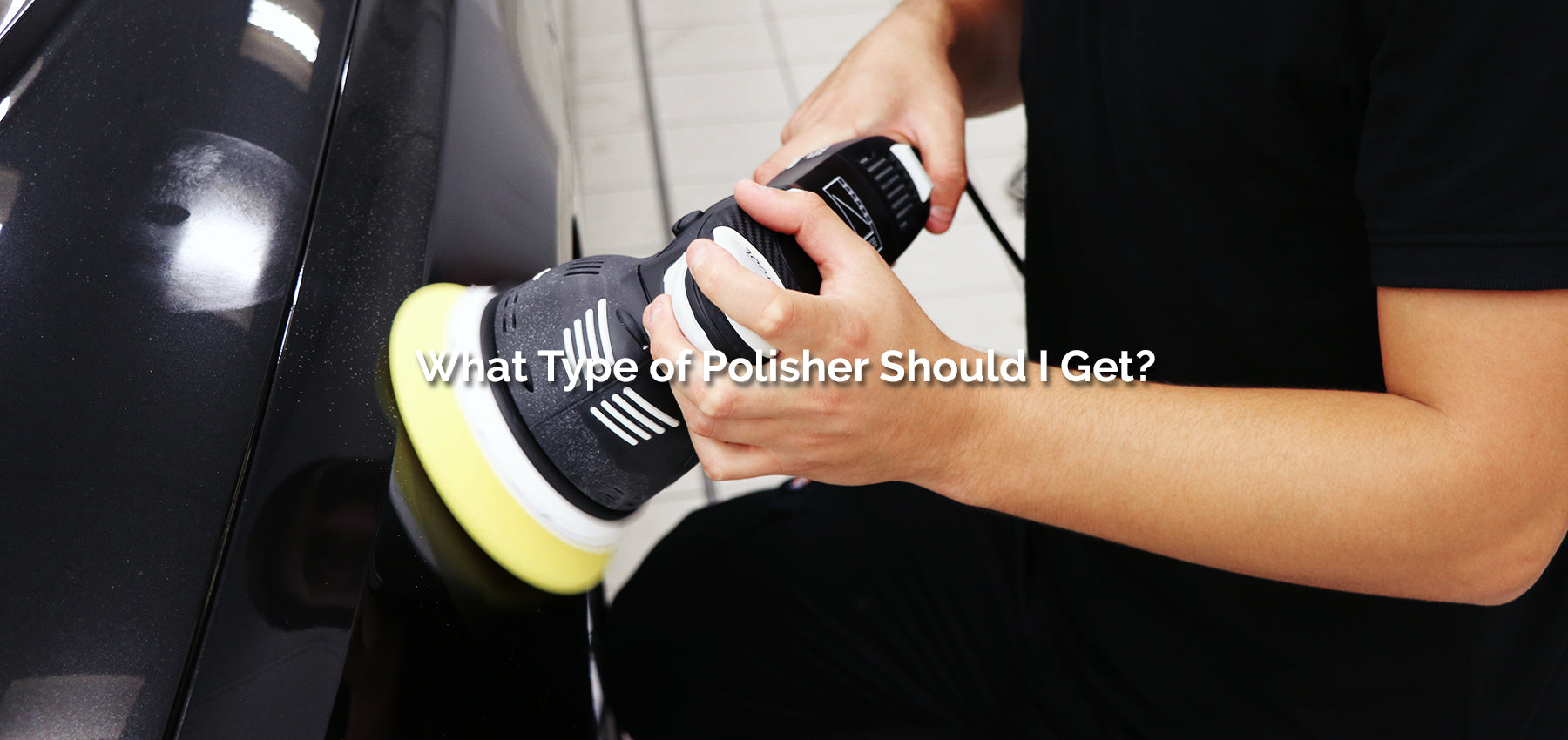
DA or Rotary - All Things Polisher
This blog is our attempt at a simple-to-understand explanation on the options available with tips and recommendations to try and steer you into buying the right machine for you. Each machine polisher will do a good job in the right hands paired with the correct pad and compound. Some compounds are designed and developed to work with the right type of machine polisher, so it is important to get your combinations right.
A factor to consider is that not all vehicles are painted in the same type of paint. There is no single solution for all paint types that you will encounter. You can use the same machine but ultimately your compound and pad combination will need to be adjusted to suit.
Before you start, look for a flat inconspicuous area where you can do a test. Start with a fine compound and soft pad to see what you can achieve, if you need to go a bit coarser you can always work up. Ultimately, the objective is to remove the least amount of surface material to achieve the best shine possible.
Below are four graphics that show the signature of various polishers. Imagine a dot on a plain disc. The black lines show how that dot travels for the movement of each different type of profile once the machine is turned on and the pad spins. There may be some variation but these diagrams will help to explain the different signatures we will mention in this article.

Rotary Polisher
A rotary polisher spins the pad around the one axis with no deviation. The edge of the pad is travelling the fastest and therefore this part of the pad creates a lot of friction and heat in use and generates a lot of cut more quickly than the centre of the pad. The combination of heat and aggressive cut can literally burn through the paint finish especially on profiles and edges. This type of machine is not for the faint hearted and can add its own marks to the surface. It is very popular with the crash repair industry as they can literally whizz the machine over the newly painted area and remove existing imperfections very quickly. Where time is money this can be more important for some detailers. However, speed is not the most important factor in play, so a rotary polisher is recommended for the professional and experienced user. It should be constantly moving across the panel with a fast arm speed to reduce heat on the surface. If this sounds the machine for you click here.
Orbital or Hand action
An orbital polisher is designed to copy the motion of hand polishing. The pad moves in a way that closely replicates a hand waving over the panel. The off-centre movement reduces the heat and friction caused by rotary polishers and therefore reduces the cut making this a safer machine for beginners. This sort of machine produces a low level of cut so will not correct much on the surface of the paintwork. It is ideal for applying waxes and sealants and takes the strain away from hand polishing/coating applications. The pad does not spin round like a grinder but orbits around in a circle as per the diagram.
Dual Action or DA
To clarify, a dual action polisher, frequently referred to as a DA, is basically any polisher that has two actions creating the signature. Most other polishers that are not Rotary or Orbital can be described as a DA. Below we break these down a bit more into Random Orbital and Gear Driven. For our DA polishers, click here.
Random Orbital
A Random orbital machine comes in different ‘throws’ usually from 8-21mm. The longer the throw, potentially, the more the machine can cut and cover a bigger area of the surface. Larger orbits generally have larger pads, so a smaller throw of 8mm can be less aggressive than one with a 21mm throw, although rotational speed can have an effect on this.
Random Orbital Polishers have a free rotating spindle that helps prevent heat build-up burning through the clearcoat/paint. This also prevents and removes swirls and holograms. The rotational speed can differ depending on technique, pressure/angle applied to the polisher, and friction resistance between the pad and the surface. For optimal dual action movement, it is recommended that Random Orbital Polishers are used as flat/parallel to the surface as possible.
The pad follows an orbit which is governed by the distance between the rotation axis of the drive shaft and the centre of the spindle of the machine or the throw. Therefore, the backing plate rotates freely and the centrifugal force ‘throws’ the plate in an additional motion as shown by the diagram. If too much down force or pressure is applied to the panel, then this machine will stop rotating and revert to just an orbital movement which can reduce the overall performance of the Random Orbital Polisher.
These are very good machines to learn on and amongst the easiest and safest to handle and use.
 Our own Slim’s Detailing polisher (pictured) is Random Orbital with an 8mm throw and we sell more of this machine than any other polisher on our website. It is the perfect entry level tool. Used with the correct combination of compounds and pads, most paint imperfections can be solved working from coarse to medium through to fine and finishing with a machine polish can achieve stunning results.
Our own Slim’s Detailing polisher (pictured) is Random Orbital with an 8mm throw and we sell more of this machine than any other polisher on our website. It is the perfect entry level tool. Used with the correct combination of compounds and pads, most paint imperfections can be solved working from coarse to medium through to fine and finishing with a machine polish can achieve stunning results.
If you are a beginner then buying a kit like this will provide you with everything you need to get started. We sell several versions of these starter kits with different brands of compound and combinations so do a little research to find the one that will be best for you. You can find them here. Stunning results can be achieved for relatively little cost.
Gear Driven or Forced Rotation or Planetary
The backing pad follows an orbit based on the distance between the rotation axis of the drive shaft and the central axis of the pad. This machine has a set rotation speed and for each rotation there is a fixed number of orbits which will not deviate producing this scalloped action. Applying pressure to the machine will not stop it rotating or orbiting as the gears will keep it driving constantly on this motion. It is generally regarded as one of the easiest machines to use as is the least technique dependant due to its fixed dual action movement.
Multi-Function Machines
There are some machines that are designed to offer more than one function. One of the most popular machines we sell is the RUPES iBrid Nano. This is a multi-action tool designed to get into the smallest of areas and to work on awkward shaped items. This tool can be switched from 3mm, 12mm Random Orbital, or to a straight Rotary and comes with 30 & 50mm backing pads.
There is one full size polisher that can be switched between rotary and DA: the Lake Country UDOS 51E, which has 5 functions switching from rotary to 12mm, 15mm & 21mm Orbital, and also a Sanding setting. These can be ordered by calling our sales team.
In summary we have one of the most extensive ranges of machine polishers for all users from our own Slim’s Detailing polisher to ranges and machines from RUPES, FLEX, Festool, Chemical Guys, Meguiar’s, Lake Country, Farecla and Deltaylo.
Slim’s Detailing would like to acknowledge the help of Matt Taylor of RUPES (UK) Ltd for his help with this article and helping to clarify the characteristics of each type of machine. If you are still unsure about what polishing machine you need please contact our customer service team, for additional advice or look at your options on our website.
